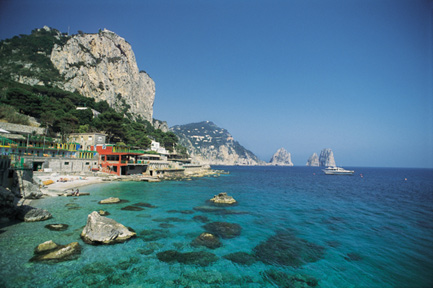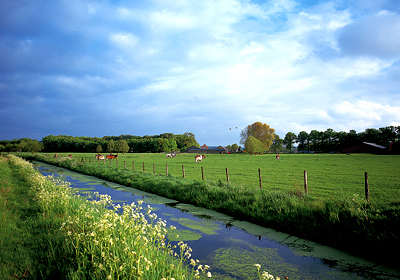|
Midlatitude climates
Like the low latitude climates, the midlatitude climates are broken down into several subcategories. Let's start with the highland climate. This climate is found in the mountains of the midlatitudes. The highland climates are cool to cold, depending on the altitude; the higher the altitude, the colder the temperature. The highlands have the same seasons and the same wet and dry periods as the general area that they are located in. For instance, the mountains in desert areas receive little rain, and the mountains in humid areas receive a lot of rain. When it is winter in Utah, it is winter in the High Uintas (a wilderness area southeast of Salt Lake City), and when it is summer in Utah the temperature warms up in the High Uintas. Highland climates are found in the high elevations of the Rocky Mountains, the Andean mountain range in South America, the Alps in Europe, Mt. Kilimanjaro in Africa, the Himalayans in Tibet, and Mt. Fuji in Japan. There are also the dry midlatitude climates. These are the lower elevation areas situated between 35° and 55° latitude. There are really two different dry midlatitude climates: the steppe climate and the grassland climate. The steppe climate is not quite a desert since it receives some moisture, but it is quite dry and usually receives somewhere between four and twenty inches of precipitation each year. Look at the US precipitation distribution in Figure 4.3.2. Find the areas that receive four to twenty inches of rain. As you can see, most of the western side of the US has a steppe climate. The grassland climates receive a little more rain, usually about thirty-two inches per year. Look at the map again and find the areas that receive between twenty and thirty inches of rain. As you can see, the US has a narrow band of grassland climate. Europe and northern China are other areas that have dry midlatitude climates.
The Mediterranean climate is also found in the midlatitudes. This climate has a very long, dry summer with a wet winter. Like the steppe, the Mediterranean climate is not quite a desert, but it is still quite dry, usually receiving only about seventeen inches of rain per year. The biggest difference between the Mediterranean and steppe climates is the temperature. This is because Mediterranean climate zones are located along coastal regions and receive the moderating influence of ocean currents, so there is not a wide range between winter and summer temperatures. As you might expect, the Mediterranean climate is found along the coastal zones of the Mediterranean Sea in Europe, as well as in central and southern California. Western and southern Australia and the Chilean coast in South America also have Mediterranean climates.
The moist continental climate is the last midlatitude climate subgroup we will consider. This area is also between 35° and 55° latitude, but it lacks mountain ranges to block the air masses so polar and tropical air are constantly clashing. Unlike the Mediterranean climate, the seasonal changes experienced in this climate are quite dramatic. The winters are cold and the summers are hot. Even daily temperatures change often, and there is abundant precipitation. The eastern portion of the US falls into this climate zone, as does Korea, Japan, and Eastern Europe. As you have read about climates, you might have noticed that most of the climates we have looked at are in the Northern Hemisphere. This is because more of the earth's landmass is located in the Northern Hemisphere.  
|
About Us | Terms of Use | Contact Us | Partner with Us | Press Release | Sitemap | Disclaimer | Privacy Policy
©1999-2011 OpenLearningWorld . com - All Rights Reserved




